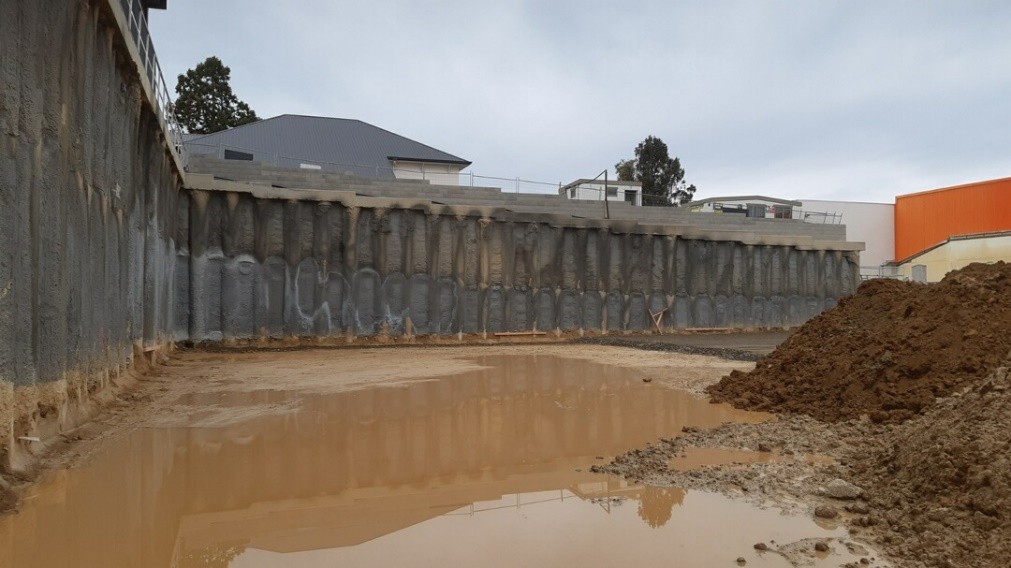The project involved the construction of 116 bored piles, with diameters of 900mm and 750mm, and varying depths ranging between 6m to 12.5m. The works included the construction of cast-in-situ capping beams and shotcrete infill panels between the piles. These were key components in ensuring the structural integrity of the site during excavation and construction.
- The geology of site consists of a deep layer of loess soil overlying a basalt flow which in turn overlies very old (Carrington) gravel.
- To facilitate the extension of the main building around 16m long and 56m wide, with a maximum cut of around 6.5m in the north-west corner, a continuous bored pile retaining wall was completed, followed by cast-in-situ capping beam and shotcrete in-fill panels.
- All piles were drilled using Geax EK110 piling rig and tremie poured. The test pile was drilled to 13m depth to understand site geology and to ensure no drilling fluid/slurry will be required to maintain the hole stability.
- Piles were drilled in a hit-and-miss pattern to ensure the stability of surrounding structures and soil. The Geax EK110 piling rig equipped with drilling augers and buckets used to drill the piles to depths and prefabricated steel cages lowered into the pile hole, and tremie poured the pile.
- The second stage of retaining works included the construction of concrete capping beams and shotcrete infill panels. The capping beams were 1.2m wide x 1.1m in dimension and required a strength of 30Mpa at 7 days.
Quality control: A comprehensive handover package is crucial for a smooth transition from construction to the operational phase of the project. It provides all the necessary documentation, drawings, as-built information, and maintenance instructions to the client, ensuring they clearly understand the completed project and how to maintain it properly.

